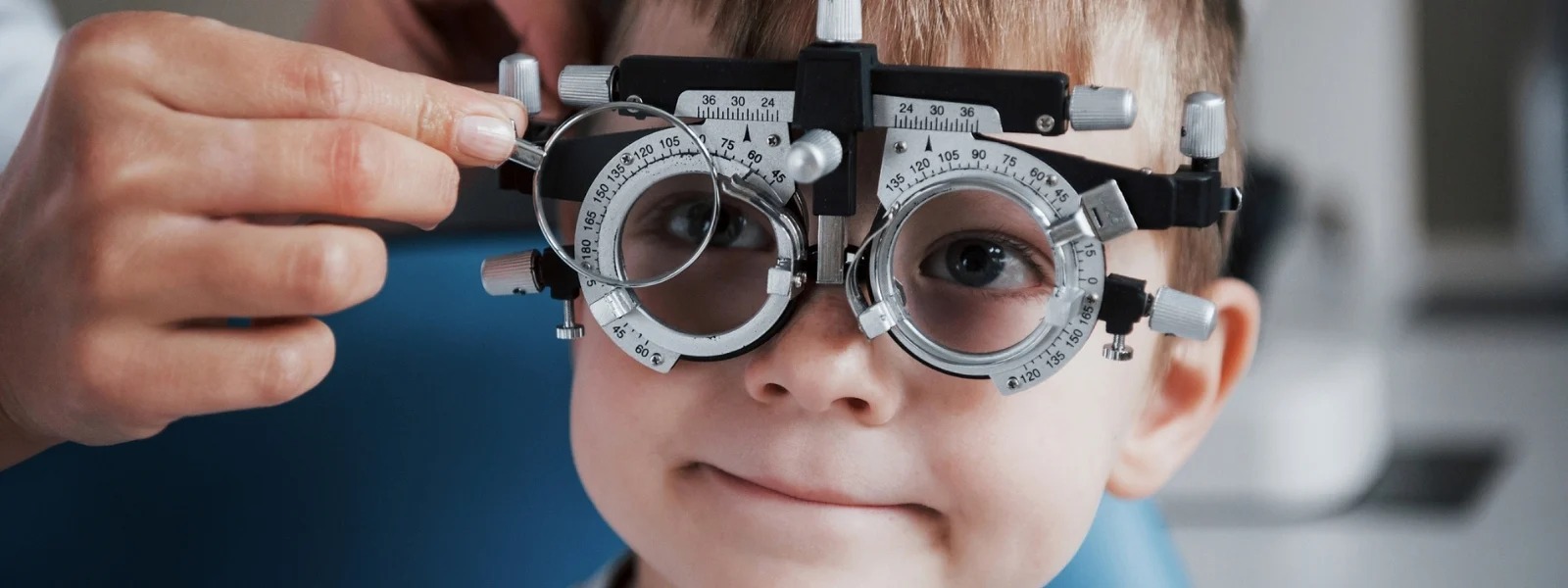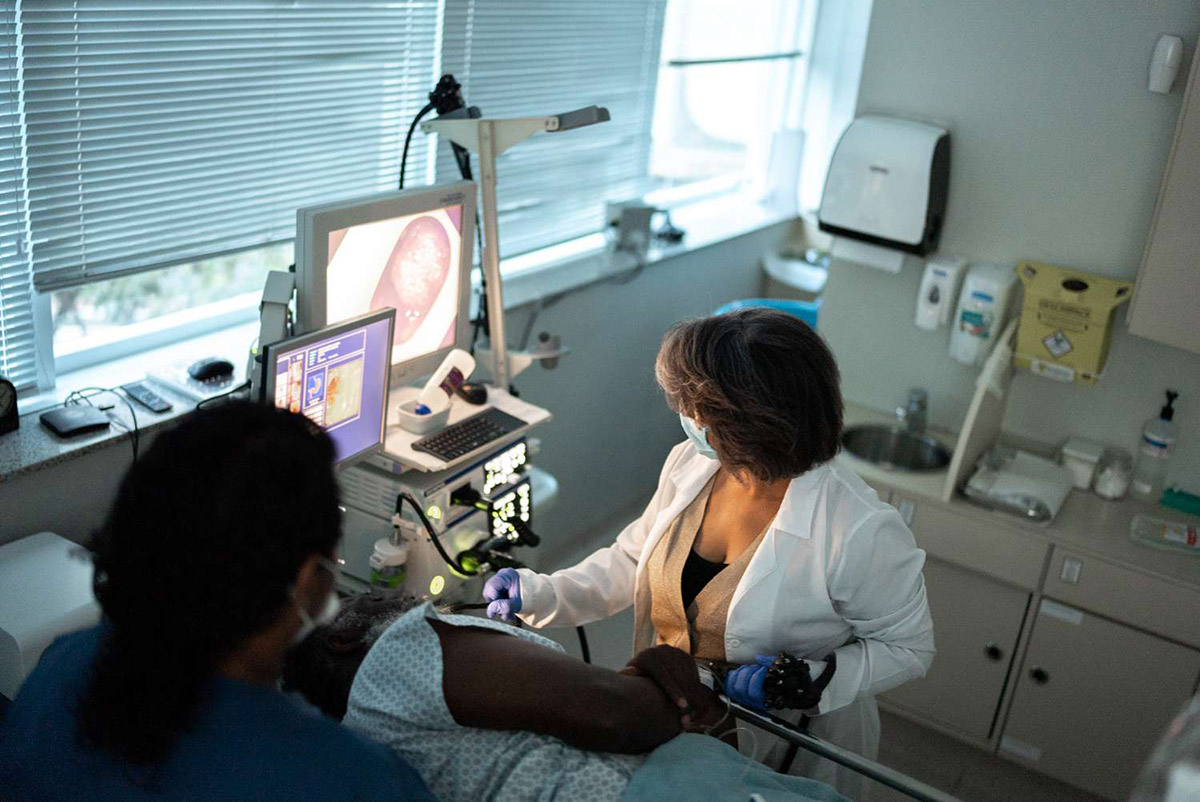Home>Finance>How Much Is An Eye Doctor Appointment Without Insurance?


Finance
How Much Is An Eye Doctor Appointment Without Insurance?
Published: November 15, 2023
Find out the cost of an eye doctor appointment without insurance and explore financing options to manage your healthcare expenses. Discover how you can afford quality eye care.
(Many of the links in this article redirect to a specific reviewed product. Your purchase of these products through affiliate links helps to generate commission for LiveWell, at no extra cost. Learn more)
Table of Contents
Introduction
Visiting an eye doctor is an important part of maintaining your overall health and well-being, as it allows for early detection and treatment of eye conditions. However, the cost of an eye doctor appointment can be a concern, especially if you don’t have insurance coverage. Without insurance, the cost of medical services can be significantly higher, leaving many individuals wondering how much they can expect to pay for an eye doctor appointment.
Several factors can impact the cost of an eye doctor appointment without insurance. These factors include the type of appointment, the geographic location, and the specific services provided. Additionally, the cost can vary based on the individual’s age and specific eye needs.
In this article, we will explore the average cost of an eye doctor appointment without insurance, as well as affordable options for eye care. We will also discuss the importance of comparing the cost of eye care with and without insurance to understand the potential savings and benefits of having coverage.
Understanding the cost of an eye doctor appointment without insurance can help you make informed decisions about your eye care needs, ensuring that you receive the necessary care while managing your budget effectively.
Factors Affecting the Cost of an Eye Doctor Appointment
The cost of an eye doctor appointment without insurance can vary based on several factors. By understanding these factors, you can better anticipate and navigate the expenses associated with your eye care needs.
1. Type of appointment: The type of eye doctor appointment you need can influence the cost. For example, a routine eye exam to check your vision and eye health may have a different price than a specialized appointment such as a contact lens fitting or a comprehensive medical eye examination.
2. Geographic location: The cost of eye care services can vary depending on where you live. In urban areas with higher living costs, eye doctor appointments may generally be more expensive compared to rural areas.
3. Specific services provided: If you require additional tests, treatments, or procedures during your appointment, such as retinal imaging or glaucoma screening, the cost may increase. These services are aimed at providing a comprehensive evaluation of your eye health and may come at an additional cost.
4. Age and specific eye needs: The cost of an eye doctor appointment can also be influenced by your age and specific eye needs. For example, pediatric eye exams for children may have different pricing structures compared to adult eye exams. Additionally, if you have conditions such as diabetes or a history of eye diseases, additional tests and monitoring may be required, potentially affecting the overall cost.
It is important to discuss your specific eye care needs with your eye doctor to determine the appropriate type of appointment and any additional services that may be necessary. By doing so, you can have a clearer understanding of the potential cost and plan accordingly.
Average Cost of an Eye Doctor Appointment Without Insurance
The cost of an eye doctor appointment without insurance can vary depending on the factors mentioned earlier, as well as the specific policies and pricing structure of each eye care provider. However, we can provide some average cost ranges to give you a general idea.
A routine eye exam, which typically includes vision testing and an assessment of overall eye health, can cost anywhere from $50 to $250 without insurance. This price range may vary based on the location and the complexity of the examination.
Specialized appointments, such as contact lens fittings or medical eye exams, may have higher costs. Contact lens fittings can range from $100 to $200 without insurance, while medical eye exams that involve more extensive tests and evaluations can cost anywhere from $100 to $300 or more.
Additional services, such as retinal imaging, visual field testing, or treatment for specific eye conditions, will incur extra costs. The price for these services can vary significantly, depending on the complexity and equipment required.
It is essential to keep in mind that these are average cost ranges, and the actual price you may encounter during your eye doctor appointment without insurance could be higher or lower. It is always advisable to contact the eye care provider in advance and inquire about their pricing to get an accurate estimate.
Furthermore, it is worth exploring affordable options for eye care and utilizing resources such as community clinics, discount programs, or vision insurance alternatives to help manage the cost of your eye doctor appointments.
Affordable Options for Eye Care Without Insurance
For individuals without insurance coverage, there are several affordable options available to access necessary eye care services. These options can help manage the cost of eye doctor appointments and ensure that you receive the care you need without breaking the bank.
1. Community clinics and health centers: Many communities have clinics and health centers that provide low-cost or sliding-scale fees for medical services, including eye care. These facilities often cater to individuals without insurance and offer comprehensive eye exams, vision testing, and even discounted eyewear options.
2. Non-profit organizations: There are non-profit organizations that offer assistance with eye care services. These organizations may provide free or reduced-cost eye exams, glasses, or even referrals for specialized care. Research local non-profit organizations in your area that focus on eye health and reach out to see if you qualify for their services.
3. Discount programs: Some retail optical chains or eye care providers offer discount programs for individuals without insurance. These programs may provide discounted rates on eye exams, eyeglasses, contact lenses, and even additional services. Look for discount programs in your area and inquire about their offerings.
4. Vision insurance alternatives: Consider exploring vision insurance alternatives such as discount vision plans or health savings accounts (HSAs). These options can help lower the cost of eye care by offering discounted rates on appointments, eyeglasses, and contact lenses. Research the available alternatives and choose one that best suits your needs.
5. Online retailers: Online retailers that specialize in eyewear often offer affordable prices for eyeglasses and contact lenses. While they may not provide comprehensive eye exams, purchasing eyeglasses or contact lenses online can be a cost-effective option if you have an updated prescription from a previous eye exam.
Utilizing these affordable options can help you access the necessary eye care services without insurance. It is crucial to maintain regular eye exams and address any vision concerns promptly, even if you do not have coverage, to ensure your eye health and overall well-being.
Comparing the Cost of Eye Care with and without Insurance
Having insurance coverage for eye care can significantly reduce the out-of-pocket expenses associated with eye doctor appointments. However, it is essential to compare the cost of eye care with and without insurance to understand the potential savings and benefits.
1. Cost savings on eye exams: With insurance, your eye exam cost may be significantly lower or even covered entirely depending on your plan. Without insurance, you are responsible for paying the full cost of the exam, which can range from $50 to $250 or more. By having insurance, you can save a substantial amount on routine eye exams.
2. Coverage for additional services: Insurance coverage often includes benefits for additional services such as contact lens fittings, visual field testing, or treatment for certain eye conditions. Without insurance, these services can be expensive when paid out-of-pocket. If you require these services regularly, having insurance can provide significant cost savings.
3. Eyewear expenses: Insurance plans may offer vision benefits that cover a portion of the cost of eyeglasses or contact lenses. Without insurance, the expense of purchasing prescription eyewear falls solely on you. This can range from a few hundred dollars to over a thousand dollars, depending on the type of frames, lenses, and any additional enhancements.
4. Preventive care coverage: Many insurance plans cover preventive care services, including eye exams, to detect any early signs of eye diseases or conditions. Early detection can lead to prompt treatment and potentially prevent more significant health issues. Without insurance, you may be less likely to prioritize regular eye exams, which could result in a delay in detecting and treating eye problems.
While insurance coverage for eye care comes with monthly premiums, co-pays, or deductibles, it can provide significant cost savings in the long run. Additionally, having insurance offers you peace of mind knowing that you have financial support in case of unexpected eye health issues or emergencies.
Ultimately, comparing the cost of eye care with and without insurance helps you make an informed decision about whether to invest in insurance coverage. Consider your eye care needs, budget, and the potential savings and benefits that insurance can provide.
Conclusion
Taking care of your eye health is essential, and understanding the cost of an eye doctor appointment without insurance is crucial for managing your budget effectively. While the cost of eye care without insurance can vary based on factors such as the type of appointment, geographic location, and specific services provided, there are affordable options available.
By exploring community clinics, non-profit organizations, discount programs, and vision insurance alternatives, you can access necessary eye care services at lower costs. These options can help alleviate the financial burden associated with eye doctor appointments and ensure that you receive the care you need.
However, it is important to consider the potential savings and benefits of having insurance coverage. With insurance, you can enjoy cost savings on eye exams, coverage for additional services, and assistance with eyewear expenses. Insurance also encourages regular preventive care, leading to early detection and treatment of eye conditions.
Ultimately, the decision to have insurance coverage for eye care depends on your individual circumstances and priorities. Assess your eye care needs, budget, and potential cost savings to make an informed choice about whether to invest in insurance or explore other affordable options.
Remember, maintaining the health of your eyes should not be compromised due to financial concerns. By being aware of the cost of eye care without insurance and considering the available options, you can prioritize your vision health while managing your finances responsibly.














